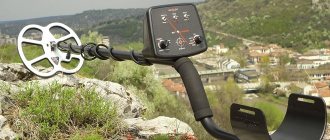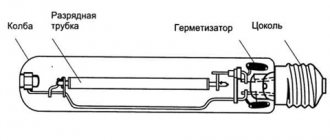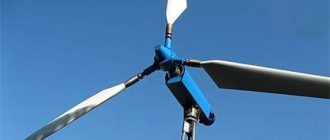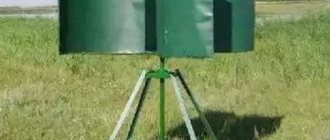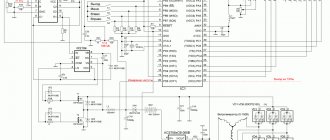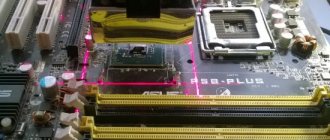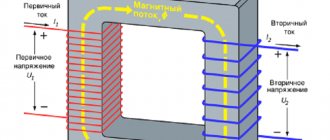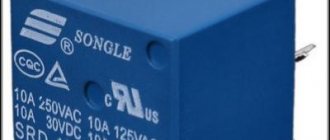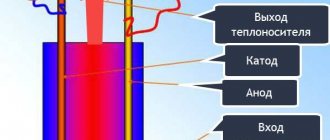Hello to all blog readers. Before I had time to write an article about wind as an alternative source of energy, my long-time subscriber contacted me and offered his own version of a rotary windmill .
Homemade rotary windmill
For obvious reasons, I will not voice his first and last name, I will only say that he himself is from Yekaterinburg, a city known to everyone for its sad events of 1918. Well, God bless them, this is basically not about them. With his permission, I would like to present the design of a rotary wind turbine (wind-electric installation), the advantages of which lie in the use of a lightweight rotor with rotatably fixed blades.
What is a rotary wind generator?
A rotary wind generator is a device for receiving wind energy and converting it into rotational motion. The axis of rotation of such structures is located vertically, which significantly changes the physics of rotation and gives the device a lot of features:
- vertical structures do not need to be pointed into the wind. The flow moving from any direction equally affects the blades of the device
- the impact of the flow occurs simultaneously on the working and reverse sides of the blades, which somewhat reduces the efficiency of the impeller
- vertical types of wind generators are not used for industrial energy generation, being used primarily for private purposes
The most significant feature of vertical structures is the vector of application of the flow force. If for horizontal impellers the wind force falls on an inclined surface and works in shear, then vertical devices in the majority receive an impulse directed at the blade in the frontal direction, which allows the flow energy to be used to the maximum extent.
In this case, simultaneously with the beneficial effect, the flow also comes into contact with the back side of the blade, which creates a counteracting force that inhibits rotation. This is the reason for the lower efficiency of vertical turbines compared to horizontal ones.
Externally, most rotor structures resemble a children's carousel - there are 2 or more blades located around a vertical axis. The shape of the blades can be different, from the likeness of vertically installed gutters to planes in the shape of an airplane wing, located vertically tangential to the circle of rotation.
All varieties have their own names, most of them have been developed a long time ago and are modifications and reinterpretations of each other.
Low speed generator
How to make a wind generator with your own hands
The easiest way to convert mechanical rotational energy into electricity is to use car generators. But ordinary generators from passenger cars are not recommended for wind turbines due to the presence of brushes in their design. Graphite brushes remove the current induced on the rotor; during operation, they wear out and require replacement. In addition, such generators are high-speed; to generate a voltage of 14 V with a current of up to 50A, 2000 or more revolutions are required.
More efficient generators for wind turbines from tractors and buses G.964.3701 with magnetic excitation of windings. They do not have brushes and operate at lower speeds. The G288A.3701 generator has three phases and is used to supply power to vehicles in conjunction with a battery. Has good characteristics for use in wind turbine systems:
- produces a voltage of 28 V;
- built-in rectifier produces direct current up to 47 A;
- output power up to 1.3 kW;
- at idle speed 1200 rpm;
- with a current load of 30A, 2100 rpm is required.
The generator has suitable dimensions and weight:
- total weight 10 kg;
- diameter 174 mm;
- length 230 mm.
Generator from MAZ - 24V
Generators of this type are used in KAMAZ, Ural, KRAZ, MAZ vehicles with engines from the Yaroslavl plant YaMZ 236, 238, 841, 842 and ZMZ 73. In order to save money, you can buy a used generator at dismantling points. To generate more electrical power at low speeds, you can make a generator with your own hands using neodymium magnets, but this is a separate topic and requires a more detailed description.
Advantages and disadvantages
Rotary structures have a number of advantages:
- there is no need to point the structure into the wind. This greatly simplifies the windmill mechanism and increases its reliability.
- devices are capable of receiving wind currents located low above the surface of the earth. They are not afraid of turbulence. This makes it possible to avoid the use of high masts, which complicate repairs or maintenance
- There are many varieties of vertical designs available to provide the most suitable device for given specific conditions
- vertical devices are the most convenient to make with your own hands
The disadvantages of rotary wind generators include:
- less efficient compared to horizontal devices
- the impellers are quite heavy, which makes them difficult to rotate, especially in light winds
- in case of hurricane or squally winds, installations need protection from destruction
The most significant advantage of rotary windmills is the possibility of self-production from scrap materials.
It is noteworthy that there are relatively few industrial models of rotary units ; most developments are still in the state of projects, working drawings. This is explained by the weak interest in wind energy on the part of Russian manufacturers and the high prices of foreign models, which are inaccessible to the mass buyer in Russia.
Required tools and materials
To make a homemade windmill you will need the following parts:
- rotor with blades;
- gearbox for regulating the rotor speed;
- gel or alkaline battery for powering electrical appliances;
- inverter for current transformation;
- tail section;
- mast.
The rotor with blades can be made independently, while the remaining elements will probably have to be purchased or assembled from the necessary parts. In addition, to assemble a homemade windmill you will need the following tools and materials:
- wood saw;
- metal scissors;
- hot glue;
- soldering iron;
- drill.
Screws and bolts are required to connect the blades to the hub and to secure the metal pipe to the wood.
DIY wind generator blades
When making blades yourself, you should pay special attention to observing the shape of the products specified in the drawing. The blades can be wing or sail type
The second one is simpler to manufacture, but has low efficiency, which makes it ineffective in homemade wind generators of even medium size.
For the manufacture of homemade wind generator blades, the following materials are suitable:
- plastic;
- tree;
- aluminum;
- fiberglass;
- polyvinyl chloride
Design of the blade part of a wind generator
If you choose polyvinyl chloride, then PVC pipes with a diameter of 160 mm or more are perfect for creating blades. Plastic and wood are less wear-resistant materials that, under the influence of precipitation and strong winds, will become unusable in a few years. The best option is aluminum: it is durable and lightweight, resistant to tearing and creasing, and resistant to moisture and elevated temperatures.
Step-by-step manufacturing instructions
When all the drawings have been drawn up and the materials and tools have been prepared, you can begin to assemble the wind generator with your own hands, following the following procedure:
- Prepare the concrete foundation. The depth of the pit and the volume of concrete mixture are calculated based on the type of soil and climatic conditions. After pouring, the foundation needs several weeks to gain the required strength. Only after this can the mast be installed into it to a depth of 60-70 cm, securing it with guy ropes.
- Place the prepared blades in the pipe, secure them with screws and nuts on the bushing on which the engine will be installed.
- Place the diode bridge next to the engine and secure it with self-tapping screws. Connect the wire from the motor to the positive diode bridge, and the other wire to the negative bridge.
- Secure the motor shaft, put the bushing on it and tighten it tightly counterclockwise.
- Balance the base of the pipe with the motor and shaft attached to it and mark the balance point.
- Secure the base of the device with bolts.
A wind generator can last much longer if you paint not only the blades, but the base, shaft and engine cover. To turn on the installation you will need a set of wires, a charger, an ammeter and a battery.
Types of devices
There are many types of rotary units. The most famous include:
- orthogonal rotor
- Onipko rotor
- heliocentric rotor
- Savonius rotor
- Daria rotor
- Ugrinsky rotor, etc.
Most of the designs were created at the beginning of the last century, but were not widely used due to low interest in household installations, which included rotary windmills. In Europe, there was a growing need for greater capacity, which required the use of large installations.
Large rotor devices are inoperative due to the large rest mass and significant resistance to wind flow. Therefore, primacy was given to horizontal types of construction, as they are more efficient.
In Russia, the attitude towards wind energy was initially purely scientific; the direction was considered as applied and not of high importance. The abundance of powerful, full-flowing rivers has made it possible to develop hydropower, which is much more efficient than using wind energy, at least at the current level of technology development.
Interest in wind generators has appeared literally in recent decades and is caused by a lack of network resources and the general deterioration of networks. A large number of developments and home-made devices have appeared that have demonstrated their suitability for private use to secure a home or estate.
Legality of installation
It is not prohibited to install installations with an output power of up to 75 kW on your own territory, and no approvals will be required (a fact enshrined in the Resolution of the Russian Cabinet of Ministers).
And if you need to install a powerful generator of an industrial or commercial type, then you will need special preparation related to the creation of the foundation and fencing of the site - and this is already considered capital construction.
It is recommended that you read local regulations regarding energy and utility services before installing VEL. Different regions may have their own rules.
Is a rotary wind generator profitable or not?
Rotary devices can only be considered from the point of view of benefits in comparison with any other energy supply options. If we compare network energy and rotary wind generators, then the networks will clearly win. They supply energy stably and are not affected by the presence or speed of wind. The only drawback is the frequent interruptions that occur due to the general dilapidation of the network infrastructure, outdated equipment and the growth of consumers.
If we consider rotary installations in comparison with solar batteries, we can note their independence from the time of day or weather. In this case, solar panels and wind turbines are often combined for reasons that at least one source will be available.
For households or remote villages that do not have the ability to connect to the grid electricity, there is no point in talking about benefits, since there is nothing to compare with. The situation is simple - either there is no energy, or there is.
Legality of installing a wind generator
Alternative energy sources are the dream of any summer resident or homeowner whose plot is located far from central networks. However, when we receive bills for electricity consumed in a city apartment and look at the increased tariffs, we realize that a wind generator created for domestic needs would not hurt us.
After reading this article, perhaps you will make your dream come true.
A wind generator is an excellent solution for providing a country property with electricity. Moreover, in some cases, installing it is the only possible solution.
In order not to waste money, effort and time, let's decide: are there any external circumstances that will create obstacles for us during the operation of the wind generator?
To provide electricity to a summer house or small cottage, a small wind power plant with a power not exceeding 1 kW is sufficient. Such devices in Russia are equated to household products. Their installation does not require certificates, permits or any additional approvals.
In order to determine the feasibility of installing a wind generator, it is necessary to find out the wind energy potential of a particular area (click to enlarge)
However, just in case, you should ask if there are any local regulations regarding individual power supply that could create obstacles in the installation and operation of this device.
Your neighbors may have claims if they experience inconvenience caused by the operation of the windmill. Don't forget that our rights end where other people's rights begin.
Therefore, when purchasing or independently manufacturing a wind generator for your home, you need to pay serious attention to the following parameters:
Mast height. When assembling a wind generator, you need to take into account the restrictions on the height of individual buildings that exist in a number of countries around the world, as well as the location of your own site. Please be aware that structures taller than 15 meters are prohibited near bridges, airports and tunnels. Noise from gearbox and blades. The parameters of the generated noise can be determined using a special device, and then the measurement results can be documented
It is important that they do not exceed established noise standards. On-air interference. Ideally, when creating a windmill, protection against TV interference should be provided where your device can cause such troubles. Environmental Services Claims. This organization can prevent you from operating the installation only if it interferes with the migration of migratory birds. But this is unlikely.
When creating and installing a device yourself, learn these points, and when purchasing a finished product, pay attention to the parameters that are in its passport. It’s better to protect yourself in advance than to be upset later
- The feasibility of installing a wind turbine is justified primarily by the sufficiently high and stable wind pressure in the area;
- It is necessary to have a sufficiently large area, the usable area of which will not be significantly reduced due to the installation of the system;
- Due to the noise that accompanies the operation of a windmill, it is advisable that there be at least 200 m between the neighbors’ homes and the installation;
- A convincing argument in favor of installing a wind generator is the steadily increasing cost of electricity;
- The installation of a wind generator is possible only in areas where the authorities do not hinder, but rather encourage, the use of green energy;
- If there are frequent interruptions in the region where a mini power plant is being built that processes wind energy, the installation will minimize the inconvenience;
- The owner of the system must be prepared for the fact that the funds invested in the finished product will not pay off immediately. The economic effect can become noticeable in 10 - 15 years;
- If the payback of the system is not the last moment, you should think about building a mini power plant with your own hands.
DIY assembly
Purchasing a ready-made windmill manufactured at a factory is beyond the means of most potential users. Even relatively cheap Chinese models are quite expensive, and European models have a price several times higher. Considering the relatively short service life of the installations - about 25 years - it becomes clear that purchasing ready-made kits is not a suitable option for the Russian user.
The solution to the problem is to independently manufacture a rotary wind generator . When using improvised materials, it is quite possible to keep it within a relatively low amount; 20,000 rubles will be enough for everything. This circumstance has caused an increase in the production of various models of wind turbines, which has a positive effect on the development of the field as a whole and on the development of design features of different types of rotary wind turbines.
To create a functioning wind generator, appropriate materials are required. Some elements of the kit will have to be purchased. For example, batteries and some devices (charge controller or inverter) that you cannot assemble yourself will also have to be purchased.
Almost all elements of the impeller can be created from scrap materials. The generator can be used ready-made, for example, a wheel motor, car or tractor generator. You can remake an asynchronous motor, or assemble an axial generator using neodymium magnets. The abundance of options contributes to the development of home-made devices in Russia, many of which successfully fulfill their tasks in practice and contribute to the movement of wind energy among the population.
Operating principle and main elements
The operation of a homemade wind generator is no different from industrial models; the operating principles are the same. Wind energy is converted into mechanical energy by rotating a generator rotor, which produces electricity.
Main design elements (Fig. above):
- propeller with blades;
- a rotation shaft through which torque is transmitted to the generator rotor;
- generator;
- design for mounting the generator at the installation site;
- if necessary, to increase the rotor speed, a gearbox or belt drive can be installed between the shaft with the propeller and the generator shaft;
- to convert the alternating current of the generator into direct current, a converter, a rectifying diode bridge, is used, the current from which is supplied to recharge the battery;
- a battery from which electricity is supplied through the inverter to the load;
- The inverter converts the battery's 12 V or 24 V DC current into 220 V AC.
The designs of propellers, generators, gearboxes and other elements may differ, have different characteristics, and additional devices, but the system is always based on the listed components.
Instructions
Before starting work, you should decide on the choice of windmill design. The most successful models, capable of providing energy to a sufficiently large number of consumers, are considered to be carousel installations, popularly nicknamed “barrel-raking”. They consist of several blades, similar to longitudinally cut halves of metal barrels, mounted vertically around the axis of rotation.
You can indeed use cut barrels, but the best solution would be to make the blades from sheet aluminum to lighten the impeller.
The shaft is mounted on the hubs and the impeller is mounted on the projecting upper end. To limit the rotation speed during sudden gusts of wind, centrifugal limiters are usually used, which are weights suspended on chains. As the rotation speed increases, they increase the pressure on the blades and fold them, reducing the area affected by the flow and, accordingly, the rotation speed.
The generator is mounted either directly on the shaft in the lower part, or by means of a V-belt drive on a separate support platform. It is recommended to install a protective cover to protect the device from rain or snow, dust and other unwanted influences.
The windmill is installed on a hill. High masts are not required for such structures, however, such devices are often found on the roofs of houses. This is an undesirable option, since vibrations from the operation of a windmill have not yet been completely eliminated, which can create some inconvenience for the residents of the house.
Diagram of a homemade wind generator - main components
Making a homemade wind generator at home is relatively easy. Below you can see a simple drawing explaining the location of the individual components. According to this drawing, we need to make or prepare the following components:
Scheme of a homemade windmill.
- Blades - they can be made from a variety of materials;
- Generator for a wind generator - you can purchase a ready-made one or make it yourself;
- Tail section – directs the blades in the direction of the wind, allowing for maximum efficiency;
- Multiplier – increases the rotation speed of the generator shaft (rotor);
- Mounting mast - all of the above components will be held on it;
- Tension cables - hold the entire structure and prevent it from falling from gusts of wind;
- The charge controller, batteries and inverter provide conversion, stabilization and accumulation of the received electricity.
We will try to make a simple rotary wind generator with you.
Wind generator - source of electricity
Utility rates are raised at least once a year. And if you look closely, in some years the price of the same electricity rises twice – the numbers in payment documents grow like mushrooms after rain. Naturally, all this hits the pocket of the consumer, whose income does not show such sustainable growth. And real incomes, as statistics show, show a downward trend.
Until recently, it was possible to combat rising electricity tariffs in one simple but illegal way - using a neodymium magnet. This product was applied to the flow meter body, causing it to stop. But we strongly do not recommend using this technique - it is unsafe, illegal, and the fine if caught will be such that it will not seem small.
The scheme was simply great, but later it stopped working for the following reasons:
Increasingly frequent control rounds began to identify unscrupulous owners en masse.
- Control rounds have become more frequent - representatives of regulatory authorities are visiting houses;
- Special stickers began to be stuck on meters - under the influence of a magnetic field they darken, exposing the offender;
- The meters have become immune to the magnetic field - electronic metering units are installed here.
Therefore, people began to pay attention to alternative sources of electricity, for example, wind generators. Another way to expose a violator stealing electricity is to conduct an examination of the level of magnetization of the meter, which easily reveals facts of theft.
Another way to expose a violator stealing electricity is to conduct an examination of the level of magnetization of the meter, which easily reveals facts of theft.
Windmills for home use are becoming commonplace in areas where wind blows frequently. A wind power generator uses the energy of wind air flows to generate electricity. To do this, they are equipped with blades that drive the generator rotors. The resulting electricity is converted into direct current, after which it is transferred to consumers or stored in batteries.
Wind generators for a private home, both home-made and factory-assembled, can be the main or auxiliary sources of electricity. Here's a typical example of how an auxiliary source works - it heats water in a boiler or powers low-voltage household lights, while the rest of the household appliances run on the main power supply. It is also possible to work as the main source of electricity in homes not connected to electrical networks. Here they feed:
- Chandeliers and lamps;
- Large household appliances;
- Heating appliances and much more.
Accordingly, in order to heat your home, you need to make or purchase a 10 kW wind power plant - this should be enough for all needs.
A wind power plant can power both traditional electrical appliances and low-voltage ones - they operate on 12 or 24 volts. A 220 V wind generator is made according to a scheme using inverter converters with electricity stored in batteries. Wind generators for 12, 24 or 36 V are simpler - they use simpler battery charge controllers with stabilizers.
Device for charging a car battery
A small wind generator that can charge a car battery is a very practical and necessary device. It is necessary to ensure a voltage that does not exceed the battery rating (usually 12 V), otherwise there is a risk of overcharging and boiling of the battery.
As a generator, you will need a homemade device of appropriate power or a ready-made asynchronous motor, tractor or car generator capable of creating a charge voltage. To protect against overcharging, you will need a controller based on a car relay-regulator that turns off the charge when the voltage is too high.
Step-by-step instructions for assembling a wind generator
Even a child can make a windmill from plastic bottles. It will spin merrily in the wind, making noise. There is a huge number of different schemes for constructing such wind turbines, in which the axis of rotation can be located both vertically and horizontally. Such things do not provide electricity, but they are excellent at dispersing moles in garden plots, which harm plants and dig their burrows everywhere. A homemade wind generator for your home is somewhat similar to this bottle windmill. Only it is larger in size and has a more serious design. But if you attach a small motor to such a windmill, it can become a source of electricity and even power some electrical thing, for example, an LED - its power is not enough for more. By looking at the diagram of such a “toy”, you can understand how to make a full-fledged wind generator.

